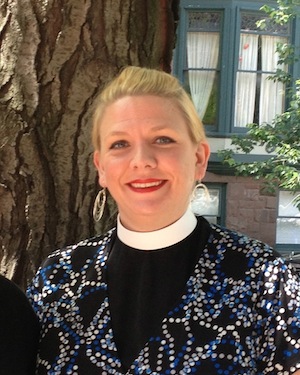
Glory to God indeed! Alleluia! I add my voice to the chorus of my brothers and sisters throughout the country singing from our new hymnal. I celebrate this new powerful resource, a labor of love that took great time, energy, and perseverance from faithful people. This hymnal will help the church of Jesus Christ learn and relearn, rehearse and practice the singing, praying, and performing of God’s Glory in the world.
Jaci C. Maraschin, perhaps one of the most important liturgists and liturgical theologians in Latin America, was concerned about the lack of glory in the world.[1] Maraschin argued, “The lack of ‘glory’ in the modern world is due to the massification process, which from economic domination, encompasses the arts and churches. […] The notion of ‘glory,’ linked to the revelation of the truth, presupposes a ground to be revealed in the thing, in the context of a new creation and not in the technological culture where art is turned as repetition, following economic production and the stereotyping of successful models.”[2]
Our hymnal does indeed help us fill the earth with the glory of God because it stretches our lungs, hearts, bodies and minds to the world. In Glory to God, we encounter the diversity of peoples, cultural expressions, and languages, that have breathed and continued to breathe life into the many churches of Jesus, past present and future. In one of the many events celebrating the new hymnal Michael Hawn, Professor of Church Music and Director of the Sacred Music Program in Perkins School of Theology, Southern Methodist University, said something like this: “If you just build a hymnal out of what’s popular in 2013, it will be dead on arrival. We need a hymnal we can grow into.” This hymnal brings a hint of that; it helps us to be born again and again in the multifaceted grace of God in Jesus Christ. In this grace we sing our glorias and are able to move into new moments and times, a new church and ultimately, a new world of justice, peace and the glory of God.
___________________________________________
Glory to God loosens our tongues to sing the songs of many cultures and thereby give voice to a variety of understandings of the church, of mission, and of faith.
___________________________________________
A hymnal is a deep theological resource, the confession of a generation who express their faith, their values, and their deepest longings through song and prayer. Glory to God loosens our tongues to sing the songs of many cultures and thereby give voice to a variety of understandings of the church, of mission, and of faith. In this plurality of possibilities, this hymnal is a kind of tongue-twister; it is difficult to articulate properly, correctly, and too quickly the glory of God in languages and idioms not our own. And yet, we come much closer to experiencing and praising the fullness of God when we sing the diversity of God’s gifts to us! In this sense, Glory to God is a Christian educational tool, a lesson in our daily catechumens, where we learn that the glory of God is not confined to our own culture but is in fact finds its fullness in a variety of cultures. Through Glory to God (both a title and a theological statement), we learn with other peoples, cultures, and tongues that giving glory to God is actually a much harder activity than we had thought; we learn that it can only be done by the mercy and grace of our God, as we learn to pause and love one another in Jesus Christ.
However, diversity risks offending people, and I feel that some regrettable linguistic sacrifices have been made in the name of caution. While the hymnal certainly has an expanded vocabulary, the feminine language for God seems disproportionately sparse to balance the traditional masculine language – considered by many to be more palatable because of the long-standing practice of male centered language.
Another thing that frustrates me a little about Glory to God is that, although the rest of the volume lifts up a plethora of diverse voices, its liturgical section includes only one order of worship. By offering only one order of worship, we inadvertently hinder the diversity of our worship services, reduce the plurality of orders and ritual expressions to a bare bones order that won’t help us imagine, explore, and expand. We are a people of many liturgical orders.
 Furthermore, the Eucharistic prayer included seems to me to reflect a middle class theology that, like our US culture, cannot acknowledge or deal with suffering. I miss the connection between the broken body of Jesus and the broken bodies of so many around the globe. Communion should be about death and life, the suffering of the world and the celebration of hope and transformation in Jesus’ resurrection. This ritual meal is costly, for it points to the death of God in Jesus Christ, and this cost must be present when we celebrate the sacrament. The death of Jesus points to the daily suffering and deaths of so many in our world; it is God’s fundamental act of solidarity with the least of these. In communion we remember the subversive life of Jesus, a life taken away on the cross by the powers that be, and the possibility that life can overcome death. Only after the cross does resurrection come with full force! By contrast, the Eucharistic prayer in Glory to God seems to sanitize the pain from the liturgy. It sets the table for a meal of fellowship, but one that seems immune to the horrors of the world.
Furthermore, the Eucharistic prayer included seems to me to reflect a middle class theology that, like our US culture, cannot acknowledge or deal with suffering. I miss the connection between the broken body of Jesus and the broken bodies of so many around the globe. Communion should be about death and life, the suffering of the world and the celebration of hope and transformation in Jesus’ resurrection. This ritual meal is costly, for it points to the death of God in Jesus Christ, and this cost must be present when we celebrate the sacrament. The death of Jesus points to the daily suffering and deaths of so many in our world; it is God’s fundamental act of solidarity with the least of these. In communion we remember the subversive life of Jesus, a life taken away on the cross by the powers that be, and the possibility that life can overcome death. Only after the cross does resurrection come with full force! By contrast, the Eucharistic prayer in Glory to God seems to sanitize the pain from the liturgy. It sets the table for a meal of fellowship, but one that seems immune to the horrors of the world.
What surprises me most, perhaps, is the text used given for the pouring of the cup: John 15:5, “Jesus said: I am the vine, you are the branches.” What does this text have to do with a meal? It is an ecclesiological and Christological text for sure, but the botanic metaphor does not lend itself to the fruit/food, or even to the meal/commensality that the Eucharist prayer proposes. The prayer does use John 6:35, which talks about hunger and thirst, but there is nothing about Jesus connecting with out hurt, pain, suffering, and sorrow. There is nothing about those who are hanging on crosses of injustice around the globe. For me, theology starts where it hurts. Our Eucharistic prayers must start on Good Friday, naming the pain and disasters of the world, before they can walk us through Easter! Without a theology of the cross (or for that matter the lynching tree), both the meal and its resurrection claims lose the possibility for real transformation. While the whole Christian celebration moves from death into life, I don’t hear that resonance in the language of the prayer/liturgical order.
Nonetheless, I assume I may be missing something. In response to the critique I have just outlined, my brother David Gambrell stated in a recent e-mail: “To me, [this Eucharistic prayer] puts human suffering at the heart/center of the Eucharistic liturgy … while making a place for hope and the vision of a different world [where people hunger and thirst no more, John 6:35, and we understand our relationship to all people as branches of one vine, John 15:5] at the conclusion of the liturgy: i.e., the goal.”
Good! Still, had more worship services and Eucharistic prayers been included in the hymnal, it could have explored a variety of theologies, ecclesiologies, soteriologies and relations to God, mirroring a bit the variety of perspectives shown through the hymns. But I am not sure how much the editors had space for liturgies.
___________________________________________
As we grow into this hymnal, perhaps singing the songs of foreign people and places will help us see that people who worship differently do not pose a threat to us.
___________________________________________
I hope we will continue this discussion. While I have my concerns about the prayer, I want to honor the wonderful and faithful work of my brothers and sisters who created it. I will pray this prayer as often as I am led to pray it, with deep gratitude and love to my brothers and sisters who wrote it – and to God!
More than anything, Glory to God is an act of faith, a visionary work of a church that hopes to put its feet where its mouth now sings. This hymnal is more of a vision for a future that is yet to come than a statement of what the church actually is now. The hymnal is ahead of us, calling us forth to be the church we can be. We long to be global, diverse, and plural, but to do so we will have to change, to learn how to receive the glory of God from other people, from the least of these, from the Global South. Glory to God is thus a precious tool for the church to move towards the multicultural future that we say we want to realize.
This hymnal begins to shift away from the European-US singing center, moving towards the ends of the globe, where Christians are singing their faith. As we do so, we will keep asking: how can the South compete with the North? How can Jaci C. Maraschin compete with Mozart? Pablo Sosa with Handel? How can we add “The Asian Sounds of the Bamboo” by I-to Loh to the mighty organ of John Tavener? Or the African music of Ikoli Harcourt Whyte to Bach?
Glory to God is a fantastic step toward lifting up the voices of forgotten communities and composers. The only way for our churches to live the diversity we hope for is to, as Hawn put it, “grow into this hymnal.” We must learn to sing other people’s songs and embrace other hymnals as well. As we continue to grow, we can intentionally engage into an ecumenical, multicultural, transnationalization of our hymnals, composers, songwriters, musicians, and all kinds of artists. Glory to God is a great step forward on this path.
___________________________________________
More than anything, Glory to God is an act of faith, a visionary work of a church that hopes to put its feet where its mouth now sings. This hymnal is more of a vision for a future that is yet to come than a statement of what the church actually is now.
___________________________________________
As we grow into this hymnal, perhaps singing the songs of foreign people and places will help us see that people who worship differently do not pose a threat to us.We can begin to sing diversity and common life into being. This hymnal can truly help us in the mutual learning of songs, of life expressions, of ways of being in the world, and of experiencing God. In this mutual learning, we gain a theological tool to understand that giving glory to God means to sing from the fullness of our lungs in the midst of a diverse crowd of people worshiping in many different ways.
Tell me what you sing, and I’ll tell you what you believe. And more: tell me how you sing it and I will tell you how you live! Learning to be the church in our time doesn’t mean we have to discard our church organs but rather to welcome another thousand instruments alongside them. In doing so, we can join the musicians of Psalm 150 and fill the earth with uncountable glories to God!
[1] Jaci C. Maraschin led the creation of the hymnal O Novo Canto da Terra (the New Song of the Earth), a groundbreaking musical work done in Brazil where, for the first time in Brazilian history, a hymnal unapologetically included native musical rhythms from Brazil and Latin America, as well as global rhythms from other parts of the world, to help us sing hymns, songs and coritos to express, explore and expand the living of the Christian faith from a tupiniquim faith, a faith sung from the cultural markers we knew.
[2] O espelho e a transparência. O credo niceno-constantinopolitano e a teologia latino-americana, (Rio de Janeiro: CEDI / Programa de Assessoria à Pastoral, 1989).
AUTHOR BIO: Cláudio Carvalhaes is former shoe shining boy from São Paulo, Brazil. Now he is also a theologian, liturgist, activist and artist teaching as Associate Professor of Liturgy and Worship at Lutheran Theological Seminary at Philadelphia. Living around the borders of several cultures he speaks badly three languages: Portuguese, English, and Spanish. He is pastor of the Presbyterian Church (U.S.A.). His first book in English is Eucharist and Globalization. Redrawing the Borders of Eucharistic Hospitality, by Wipt&Stock, 2013. His personal website is www.claudiocarvalhaes.com.
More from Advent II: LOVE in the Context of Multiculturalism.
Read more articles in this series.






Unbound Social